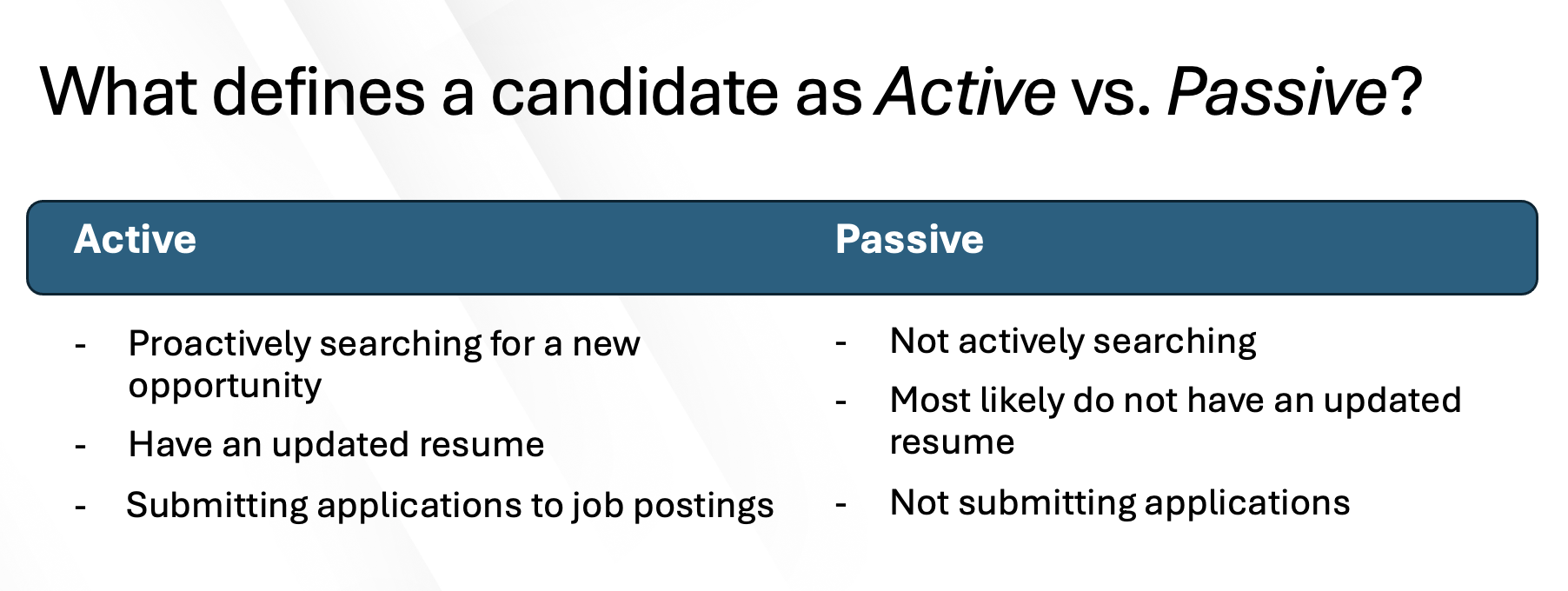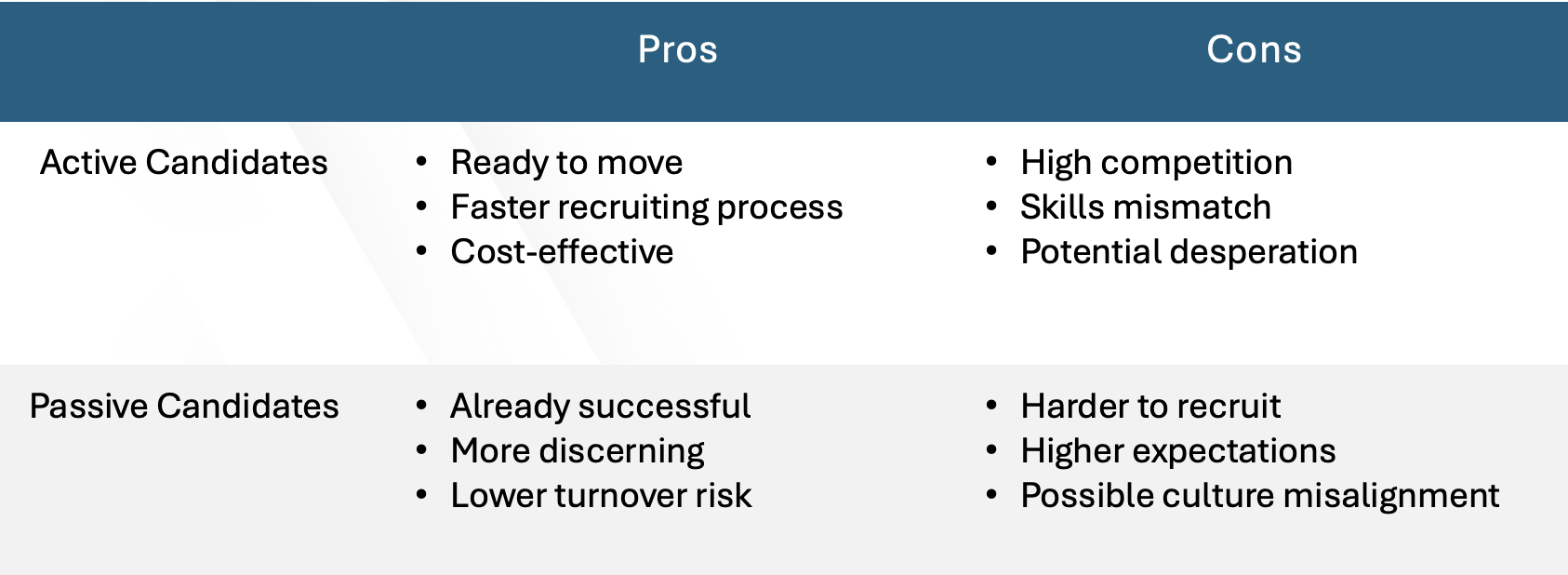Tips for Spotting Top Talent
Matthew Frye-Castillo
Smarter Hiring for 2025: Talent Recruitment Tips for Federal Government Contractors
We are now in a job market where resumes are routinely polished by AI and “purple unicorn” candidates seem more mythical than ever.
Identifying top talent now requires far more than just a well-worded job post.
Kelcie Rowley, Manager of Strategic Recruiting at PBDC-Federal Group, recently shared insights on how recruiters and hiring managers can sharpen their approach to talent acquisition through several best practices:
Clarify What You’re Looking For
Before launching a search, clarify the role’s requirements:
What skillset is essential?
What level of expertise is necessary?
Are there industries, employers, or certifications that align with your mission?
Defining these criteria upfront helps guide everything that follows, from the hiring platform you use to the questions you ask in interviews.
Without this clarity, it’s easy to waste time chasing “purple unicorns” — candidates with unrealistic combinations of skills, which is increasingly easy to fake thanks to AI.
Know the Difference Between Passive and Active Candidates
When building your recruitment strategy, it’s important to understand the difference between active and passive candidates.
Active candidates are on the move, resumes polished, and applications flying.
Passive candidates, meanwhile, might be happily employed and not scanning job boards. However, they could be open to the right opportunity if approached thoughtfully.
Credit: PBDC-FG Defining Active and Passive Candidates
Which Is Better?
Trick question! Both candidate categories have value.
A smart recruiting plan targets both: post on job boards and LinkedIn to attract active seekers, while also networking and leveraging referrals to tap into passive talent.
Credit: PBDC-FG Active and Passive Candidates Pros and Cons
Use a Combination of Recruiting Tools
A successful recruiting strategy will integrate and balance leading recruiting tools.
Kelcie notes that success isn’t a matter of choosing industry job boards or LinkedIn, but is more often a matter of finding the perfect combination by knowing the relative strengths and weaknesses of each tool.
Job Boards
Cast a wide net
Access to active candidates
Ideal for entry-level or generalist roles
Mix of active and passive candidates
Targeted talent pools
Networking and long-term relationship building
Pro Tip: A strong recruiting plan includes a mix of strategies and candidate types. Don’t overlook the hidden potential of passive candidates.
Watch Out for Red Flags
Frequent job changes
Employment gaps
Poor formatting or careless errors
Overloaded with irrelevant info
New for 2025: Generic AI-generated content
Hiring managers have long screened for job-hopping, unexplained gaps, and poorly formatted resumes. In 2025, there’s a new concern: resumes and cover letters generated by AI tools that sound impressive but say nothing meaningful.
Be on the lookout for generic phrases that lack specificity or don’t align with the role.
Pro tip: Ask candidates to explain something on their resume in detail — or better yet, how they’d approach a real-life challenge relevant to your team.
Build Relationships, Not Pipelines
Hiring and retaining top talent requires building trust. The best hires happen when recruiters and hiring managers think like long-term partners, not deal-closers.
Any hiring manager can contribute to a culture of trust through the following:
Listening to the candidate’s goals.
Providing honest insights about the role.
Being transparent about timelines and expectations.
A candidate who feels respected during the recruitment process is more likely to say yes to a final offer. Having seen a firm’s commitment to their potential, they are also more likely to return the effort by staying committed to a company’s mission long after signing.
Choose Integration over Isolation
You don’t have to choose between job boards or networking, active or passive candidates, automation or intuition. The best approach is a thoughtful mix.
Combine tools, trust your instincts, and remember: your hiring strategy is only as strong as the intention behind it.


